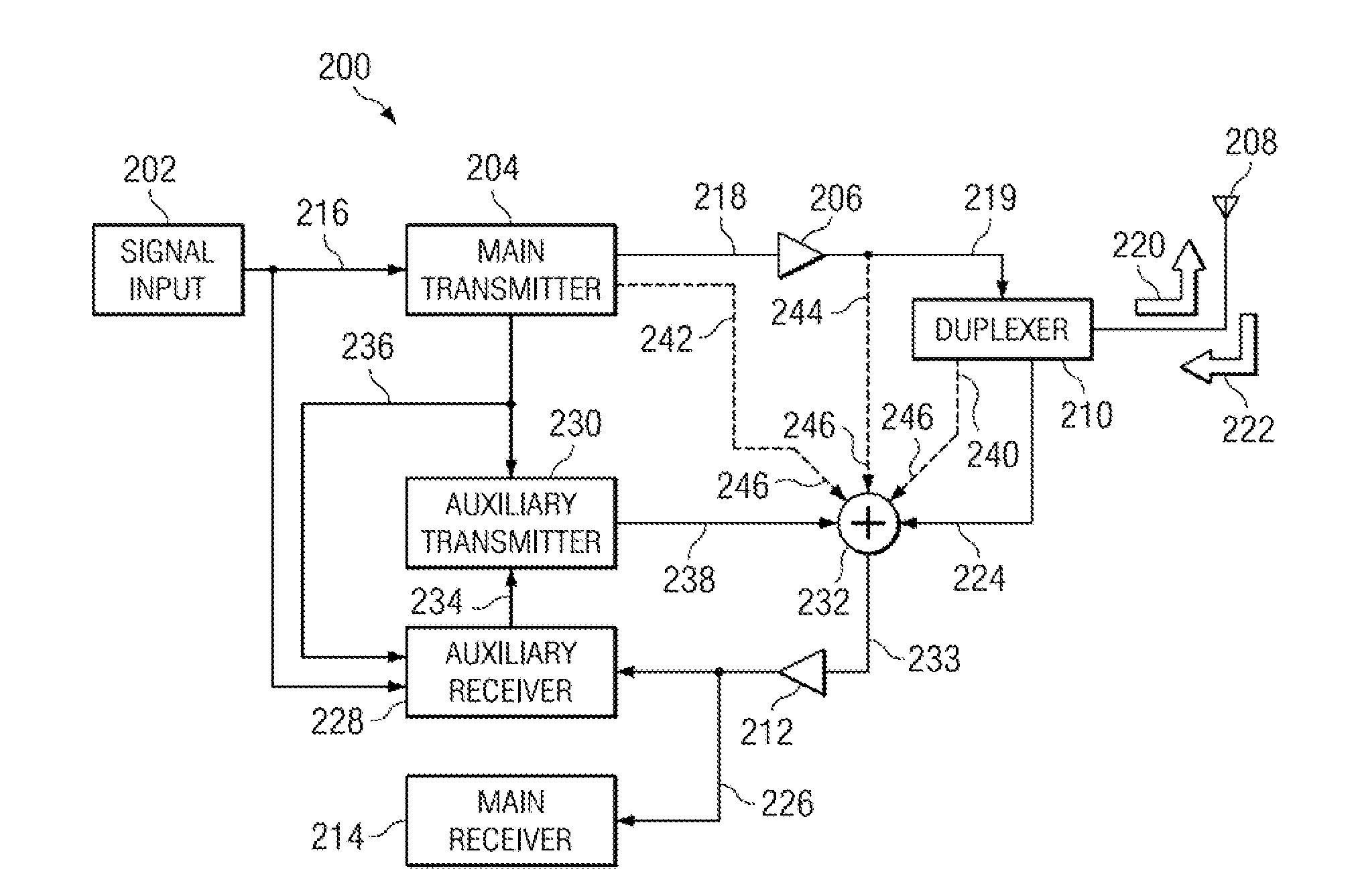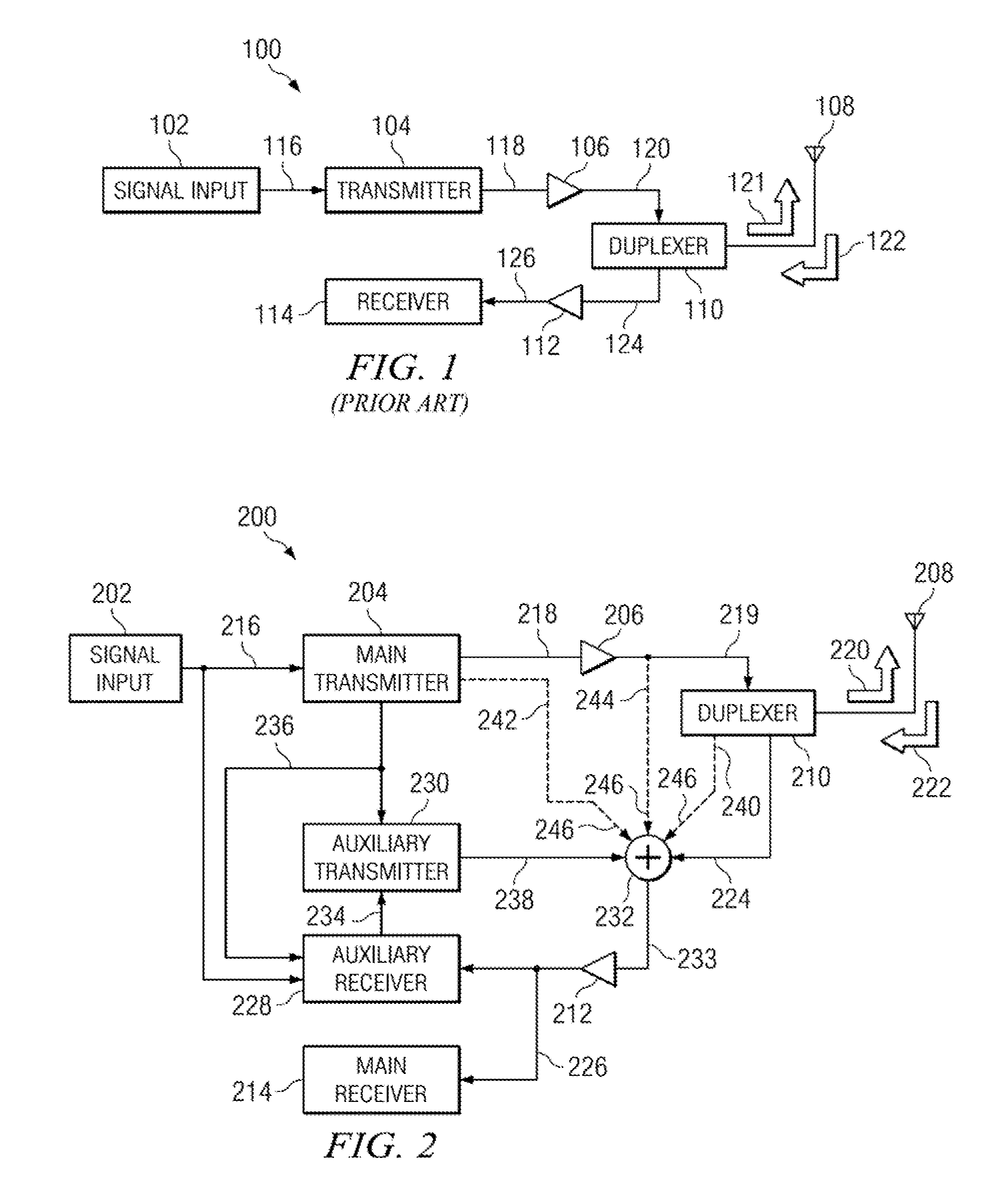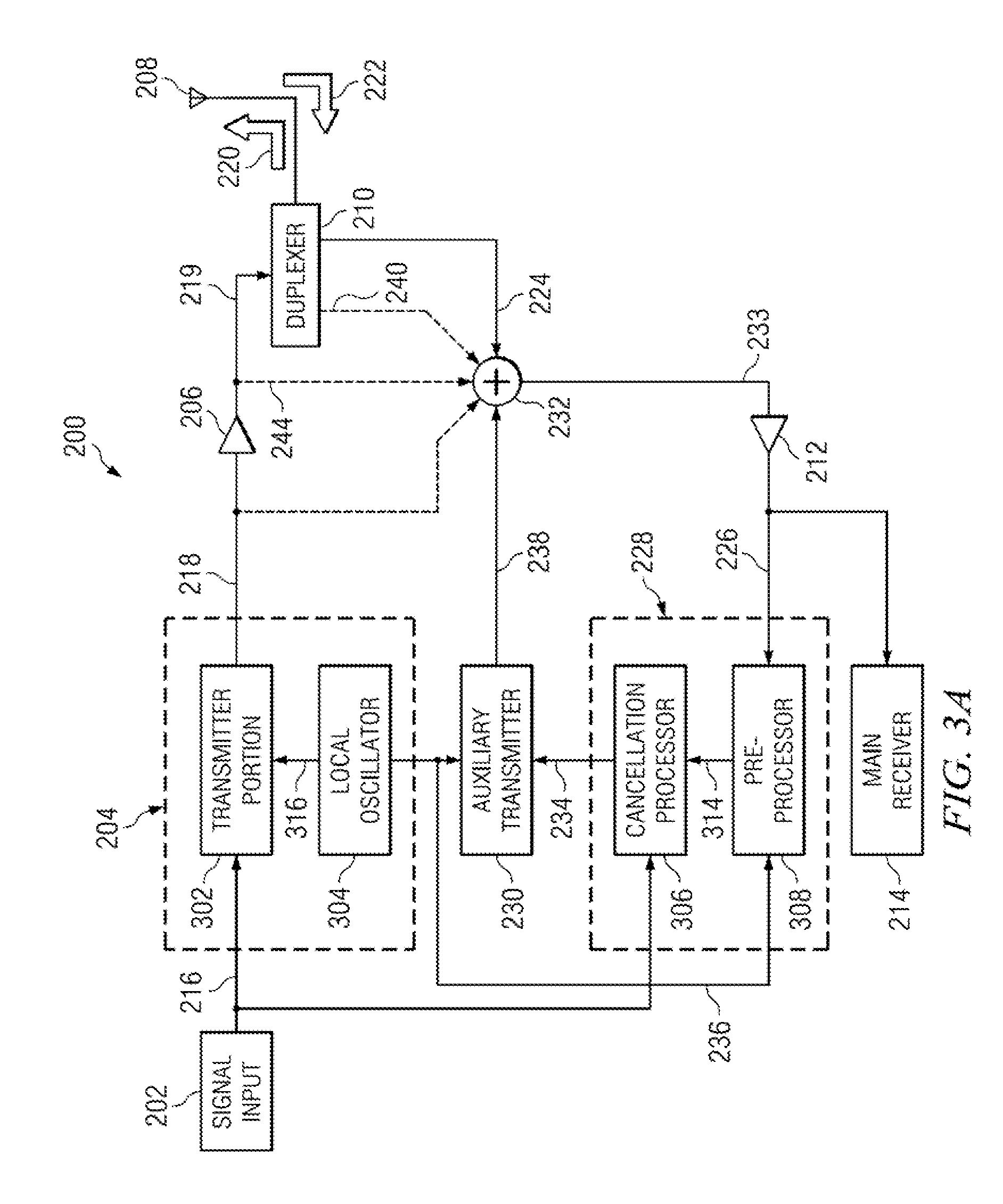System and method for transmission interference cancellation in full duplex transceiver
a transmission interference and full duplex technology, applied in transmission, transmission monitoring, electrical equipment, etc., can solve problems such as imperfect duplexer performance and interference with transmission
- Summary
- Abstract
- Description
- Claims
- Application Information
AI Technical Summary
Benefits of technology
Problems solved by technology
Method used
Image
Examples
Embodiment Construction
[0024]A full duplex transceiver in accordance with an exemplary embodiment of the invention will now be described with reference to FIG. 2. Transceiver 200 includes signal input 202, main transmitter 204, power amplifier (PA) 206, antenna 208, duplexer 210, low-noise amplifier (LNA) 212, main receiver 214, auxiliary receiver 228, auxiliary transmitter 239 and adder 232.
[0025]In this embodiment, signal input 202, main transmitter 204, power amplifier (PA) 206, antenna 208, duplexer 210, low-noise amplifier (LNA) 212, main receiver 214, auxiliary receiver 228, auxiliary transmitter 230 and adder 232 are distinct elements. However, in other embodiments, at least one of signal input 202, main transmitter 204, power amplifier (PA) 206, antenna 208, duplexer 210, low-noise amplifier (LNA) 212, main receiver 214, auxiliary receiver 228, auxiliary transmitter 230 and adder 232 may be included as a single element of transceiver 200.
[0026]The data to be transmitted 216 from signal input 202 a...
PUM
 Login to View More
Login to View More Abstract
Description
Claims
Application Information
 Login to View More
Login to View More - R&D
- Intellectual Property
- Life Sciences
- Materials
- Tech Scout
- Unparalleled Data Quality
- Higher Quality Content
- 60% Fewer Hallucinations
Browse by: Latest US Patents, China's latest patents, Technical Efficacy Thesaurus, Application Domain, Technology Topic, Popular Technical Reports.
© 2025 PatSnap. All rights reserved.Legal|Privacy policy|Modern Slavery Act Transparency Statement|Sitemap|About US| Contact US: help@patsnap.com



